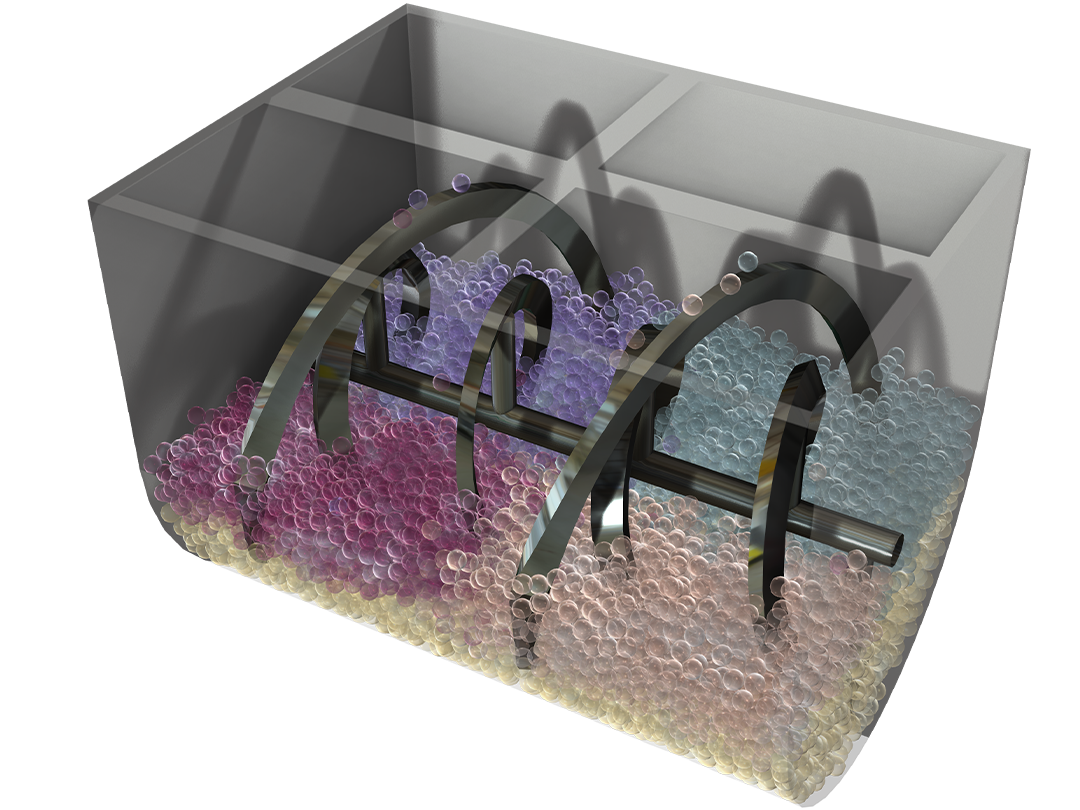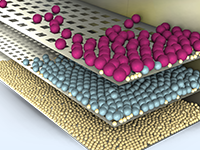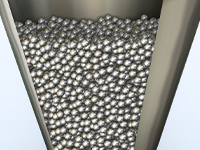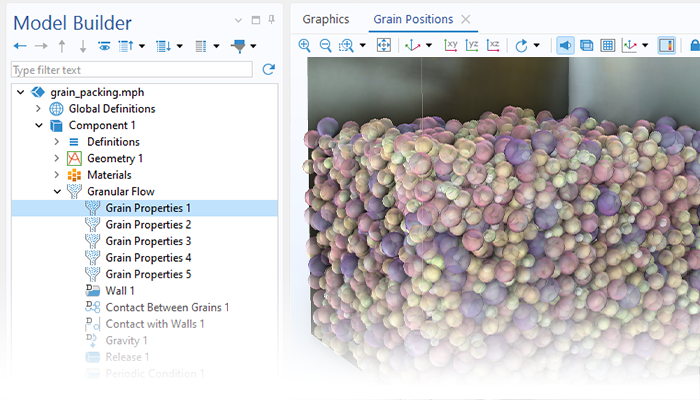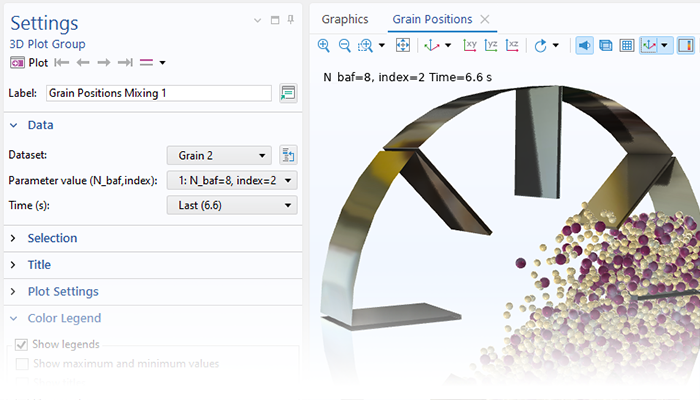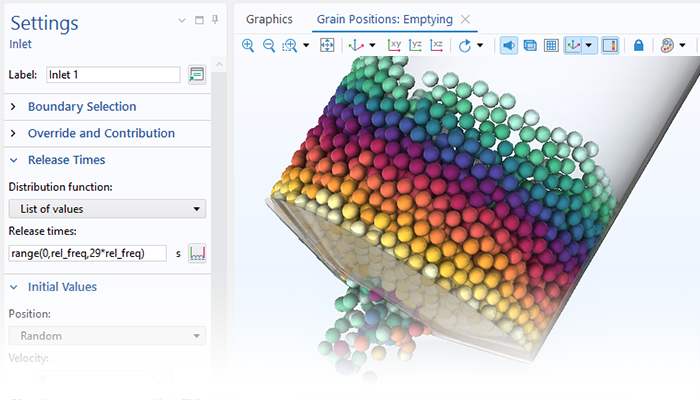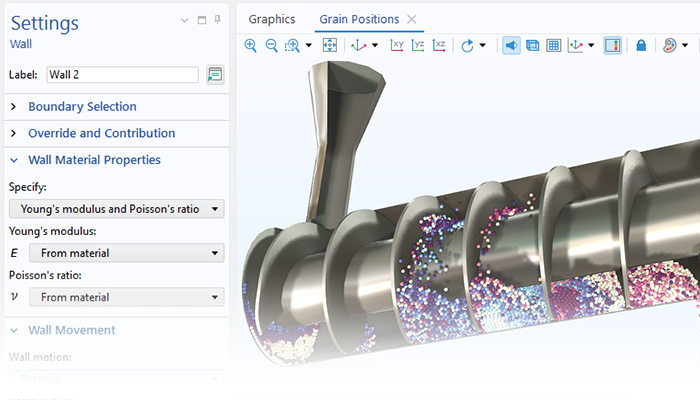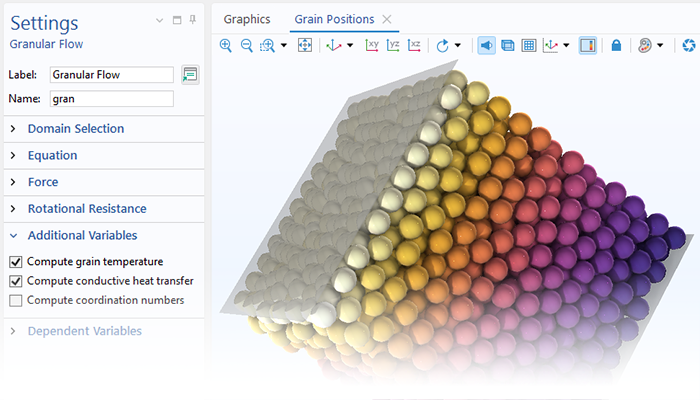Granular Flow Simulations
The Granular Flow Module is based on the discrete element method (DEM), a numerical technique for simulating granular flow by computing the motion of individual particles, or grains, over time. Unlike continuum-based methods, the DEM resolves each grain as a discrete entity with translational and rotational degrees of freedom. Their motion is governed by Newton’s laws, with forces arising from gravity, collisions with other grains, and interactions with surrounding boundaries.
The grains may represent powders, pellets, or bulk solids such as rocks, seeds, or tablets. Depending on the system, a variety of physical effects can be accounted for — including elastic and viscoelastic contact forces, adhesion, rotational resistance, and even heat transfer between grains and walls — using functionality included in the module. Grains are modeled as soft particles that deform upon contact, and their trajectories are updated for each time step, accounting for grain–grain and grain–wall collisions, as well as external forces, in order to predict the bulk motion of the system.
It is also possible to define the initial release conditions, velocities, and spatial arrangements of grains, as well as specify what happens when they interact with walls or leave the simulation domain.

